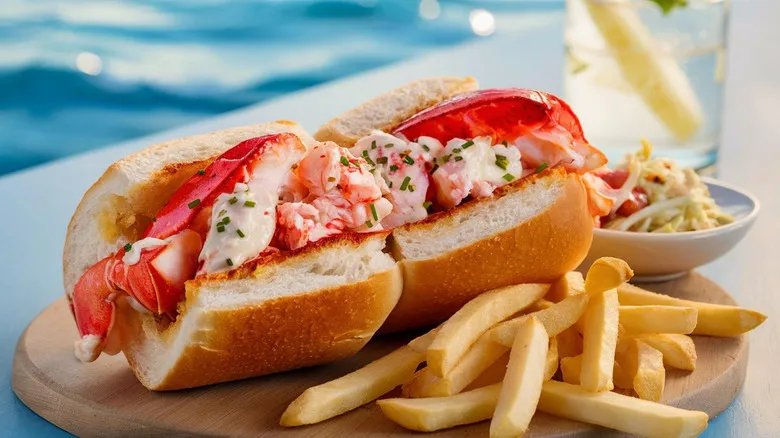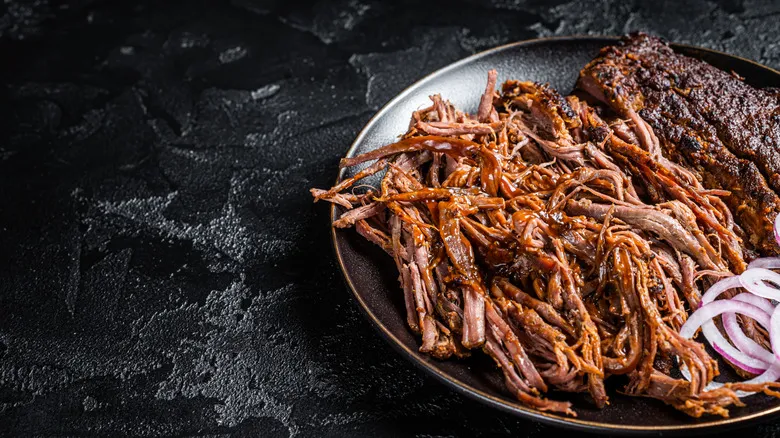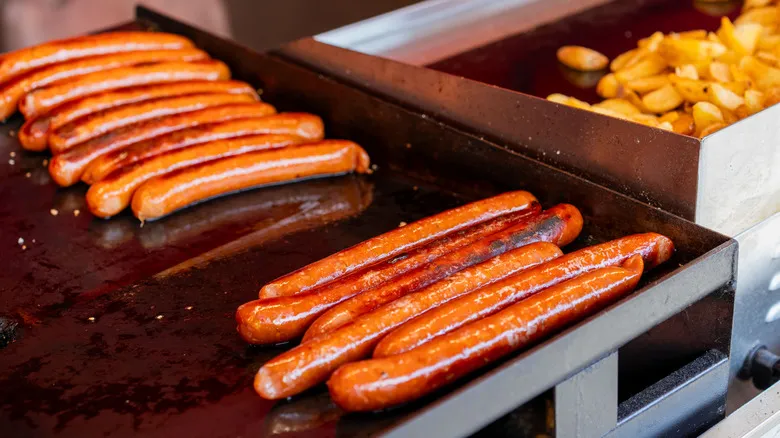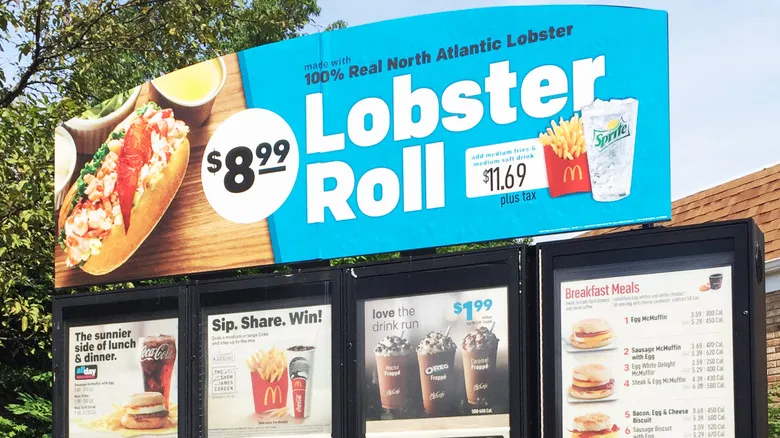A New England favorite in fast food form

The origin of the lobster roll is thought to date back to the 1920s, when restaurant owner Harry Perry crafted it in Milford, Connecticut. This cherished New England sandwich, especially favored in Maine during the summer, features chunks of fresh lobster (including knuckle, claw, and tail meat) typically combined with mayonnaise or butter and served on a toasted or grilled top-split bun. The lobster meat is often blended with mayonnaise, butter, diced celery, lemon juice, and/or Old Bay seasoning, with lettuce sometimes added for a bit of crunch. It's important to note that not all lobster rolls are created equal—there's a distinct difference between Maine and Connecticut styles.
How does McDonald's version compare to the lobster rolls found at seafood restaurants along the Northeast coast? For starters, the lobster is authentic, which likely explains why it's only available in New England, where fresh lobster is abundant. A 2016 press release from McDonald's stated that the lobster comes from North Atlantic waters and is wild-caught from East Coast docks. Stephen Felsenthal, an employee of one of McDonald's lobster suppliers, mentioned in the release: "The lobster we provide to McDonald's is a hand-selected, artisan-quality product, caught by experienced professionals in the field. This is the same caliber of lobster served at upscale restaurants on the East Coast." However, despite the use of real lobster, some food critics argue that it still tastes like a fast-food version of a lobster roll and, unsurprisingly, falls short when compared to those offered at fresh seafood shacks.
Recommended

Carnitas Vs Pulled Pork: What's The Difference?

The Country With A Surprising Appetite For Hot Dogs

Here's How People Opened Canned Food Before The Can Opener Arrived

One State Makes 88% Of The Butter In The US
Next up

